How do they measure animals for the annual London Zoo weigh-in?
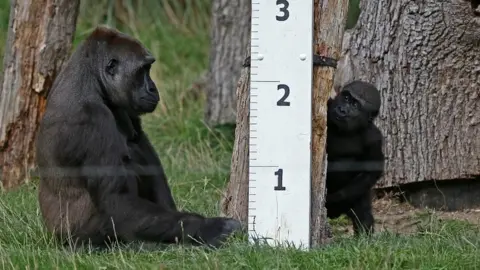 Reuters
ReutersHundreds of animals at ZSL London Zoo - from the tree frogs to the squirrel monkeys - are being measured as part of the annual weigh-in.
The sizes and weights of the creatures are recorded by zookeepers so they can monitor the creatures' health and well-being.
BBC News looks at the facts and figures behind the event.

Why do they carry out the weigh-in?
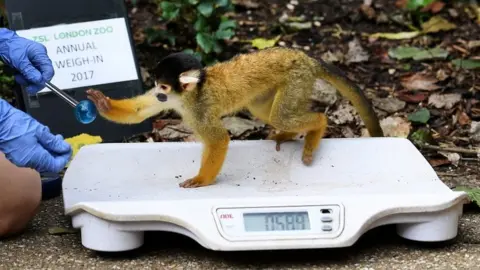 EPA
EPAThere are currently 20,166 animals and 698 different species at the zoo.
While statistics are taken during the year, the zoo say it holds the annual weigh-in to ensure measurements are up-to-date and accurate.
"Weight is a particularly important indicator of health, and we can even detect pregnancies through a growing waist line," ZSL's zoological manager Mark Habben said.
The results are recorded in a database so that zoos around the world can compare information and check their animals are normal and healthy.

What is the heaviest and the lightest animal?
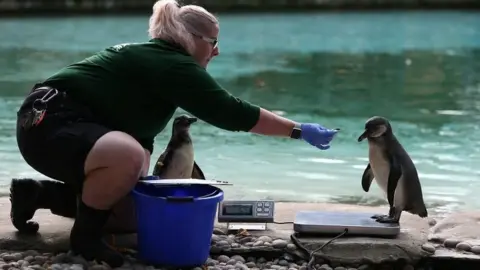 Reuters
ReutersThe heaviest creature in London Zoo is Ellish the giraffe.
The female weighs in at 850kg (133 stone) and stands at 15ft (4.5m) tall.
The lightest creature is a leaf cutter ant which weighs between three and five milligrams (0.0001 oz - 0.0002 oz)

How did some of the animals measure up?
 EPA
EPA- Hummingbird - 5g (0.17oz)
- Jae Jae the male Sumatran tiger - 130kg (4586 oz)
- Kumbuka the male gorilla - 191kg (6737.33 oz) / 6 ft tall (1.8m)
- Ganas the Komodo Dragon - 31.8kg (1122 oz) / 1.75m long
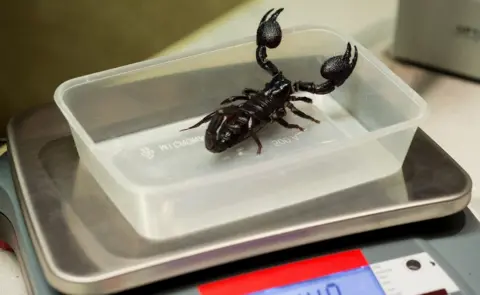 ZSL London Zoo
ZSL London Zoo
How are the animals measured?
The keepers have to use various methods to get the creatures on the scales.
 Getty Images
Getty ImagesThe penguins are tricked into walking on to the scales using fish while squirrel monkeys follow a blue ball on a stick.
For larger animals, the scales are disguised as patches of grass in order to record their statistics.
 Reuters
Reuters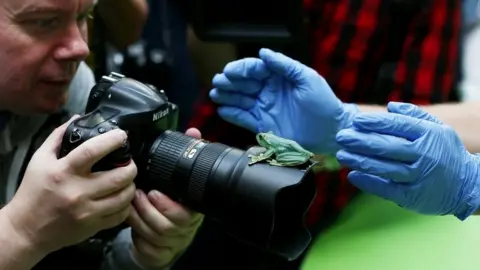 Reuters
Reuters
How does this work help animals in the wild?
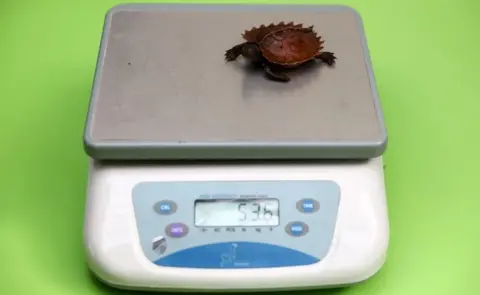 Reuters
ReutersMuch of what is known about the typical weights and measurements of animals has been discovered in zoos.
London Zoo said it meant that people who were studying wild animals could use the zoo's measurements to get a better idea about them.
For example, conservationists in Indonesia are able to tell the rough ages of the tigers they are tracking by measuring the size of their paw prints and comparing them to animals in zoos.
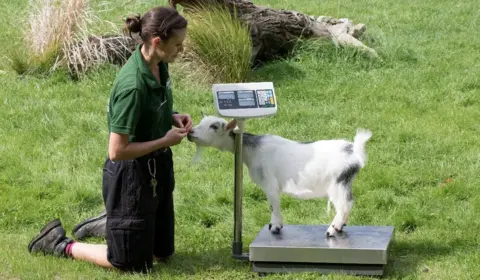 ZSL London Zoo
ZSL London Zoo